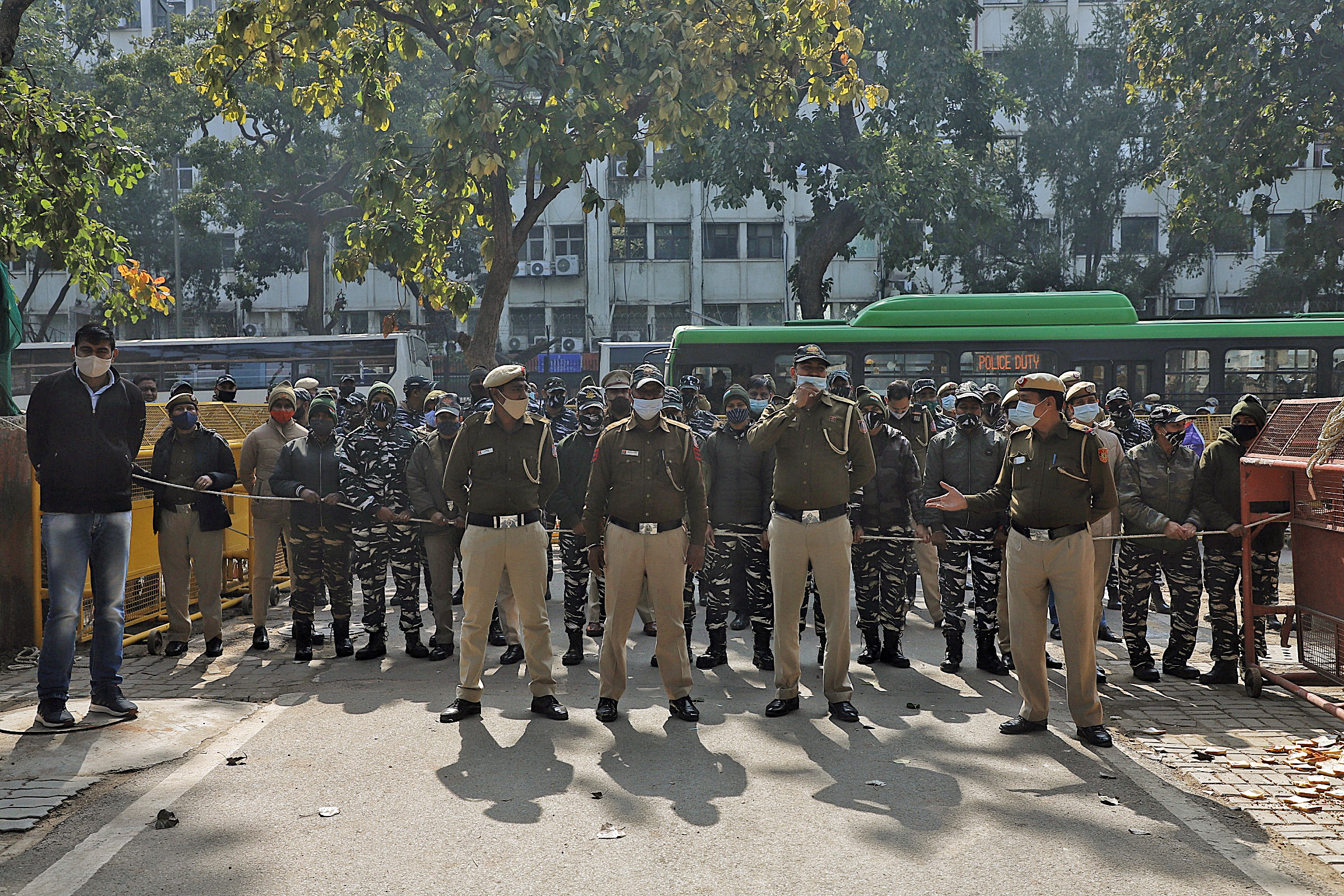The Delhi Police has always been considered as one of the finest police forces in the country and it pains the citizens when it does not live up to its standards. Barring 1984, when the demoralized force was unable to control the brutal anti-Sikh riots following the assassination of the then Prime Minister Indira Gandhi by her own security guards, the Delhi Police has performed exceedingly well in some of the most complex situations.
Therefore, when the New Year day incident where a 20-year old woman was dragged for uncountable kilometres by some occupants of a car in the Western part of the city took place, the fault lines of the Delhi Police were thoroughly exposed. There are lessons that have to be learnt from this gory happening and the Union Home Ministry also must take cognizance of the fact that the current leadership was found wanting and has let down the citizenry in a very massive manner.
Although no one spoke openly about the changes that were brought about by the former Commissioner, Rakesh Asthana, during his brief tenure, yet seasoned officers familiar with the policing in the city were aghast when the functioning of the Command and Control room was downgraded for reasons not very clear. The consequences of this decision had ramifications on the overall performance, as the PCR was virtually merged with the districts, thus making it lose its independent identity.
The Police Control and Command Centre was always considered to be the ears and eyes of the Police Commissioner, and would provide valuable information about various developments in the city, which the district level officers would try to suppress in order to minimise their role in controlling crime and the overall law and order situation.
With the PCR merging with the districts, the thana and districts gained an upper hand and thus the valuable contribution of the PCR was completely diminished. Delhi has, over the past many years, acquired a number of vans that were attached to the Control Room. The number is nearly 900 and yet despite the numbers, instead of increasing the visibility of the police on roads, the new policy completely made these vans invisible.
On any given day, on any major thoroughfare of the city, as also in the dimly lit areas, one hardly gets to see the PCR vehicles. These vehicles would to a large degree act as mobile police booths and many people would approach them to report some incident or the other. They would go to the scene of the crime and keep the main control room posted about whatever was unfolding and allowing senior officials to take an appropriate decision on how many more men were needed to be deployed to restore semblance.
The PCR vans are now found parked near the site of some unauthorized construction or are sent by thana staff on errands which were not under their purview earlier. In others words, instead of patrolling the streets and roads, the PCR vans are simply not there so as to infuse confidence amongst residents in the law and order machinery.
On the fateful morning of 1 January, when this young woman was being dragged along on the road, there was no help that came to her despite innumerable calls that were made by good Samaritans and citizens. Instead of probing this incident thoroughly, the local policemen fumbled at every juncture and at one stage tried to create the impression as if the victim was at fault.
The present Police Commissioner Sanjay Arora too seemed to have shied away from his own overall monitoring role and has neither visited the spot of the crime nor has reacted publicly to this incident in order to provide an assurance to the residents. This absence from the public domain has been pointed out by many veteran police officers who found this kind of attitude both strange and un-police like.
Without casting any aspersions on the professional capabilities of Mr Arora and his predecessor, the Union Home Ministry must initiate corrective measures to restore certain tested police policies that were changed over the past few years.
It has to be clearly understood that policing in cosmopolitan cities is completely different from policing elsewhere. Both Mr Asthana and Mr Arora may be the most competent officials but they have to recognise their own limitations which include their unfamiliarity with the crime patterns and district profiles. What is happening is that while the police emphasis is only in the districts spread over South Delhi, crimes in both Rohini and Outer Delhi districts were not getting the desired attention.
Another point that needs to be reviewed by the Home Ministry is the manner in which the traffic police has been made so unwieldy, and packed with officers who are again never visible on the roads. The general official view is that with the number of vehicles increasing in Delhi, more men were needed. This is completely flawed argument since traffic control is linked with intersections and not the number of vehicles.
The Union Home Ministry must also have a fresh look at posting officers who do not belong to the AGMUT cadre to the national capital. The 1984 riots took place when Subhash Tandon (Rajasthan cadre), who spent most years in the Intelligence Bureau, was the boss of Delhi Police and could not provide the required leadership.
The current Police Commissioner needs to rise to the occasion and ensure that corrective measures are immediately taken. Between us.
Massive letdown by Delhi Police
- Advertisement -

